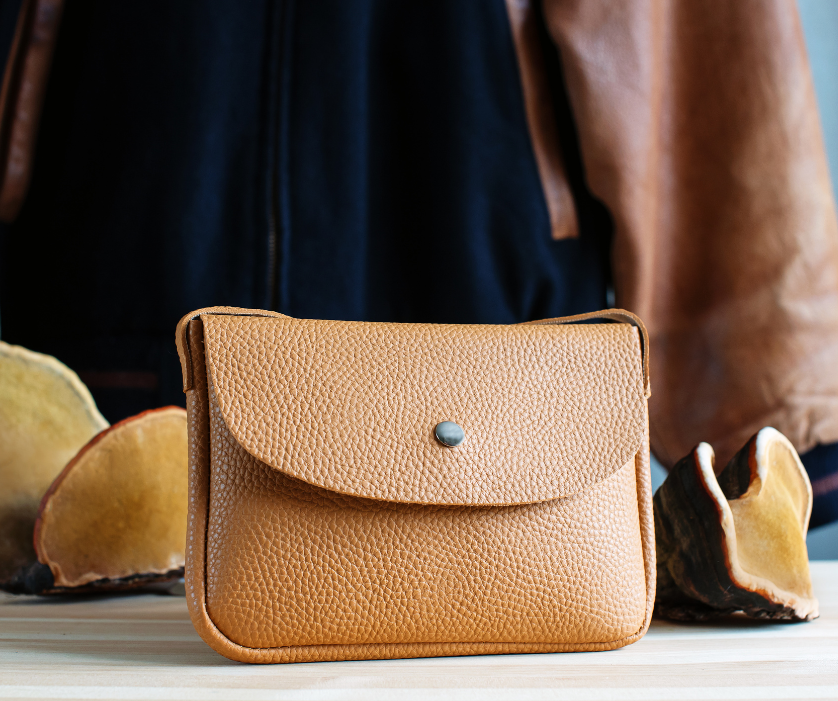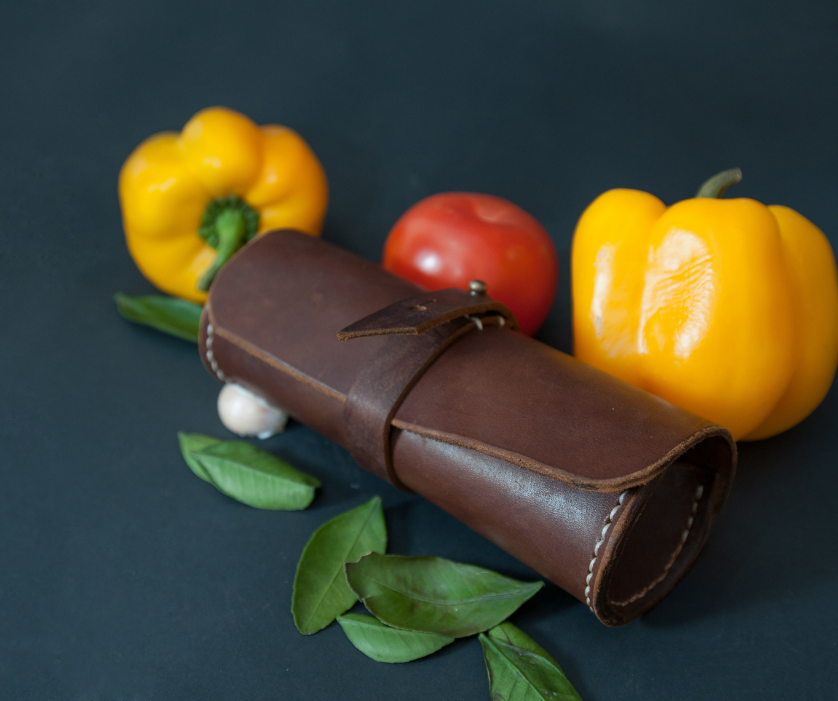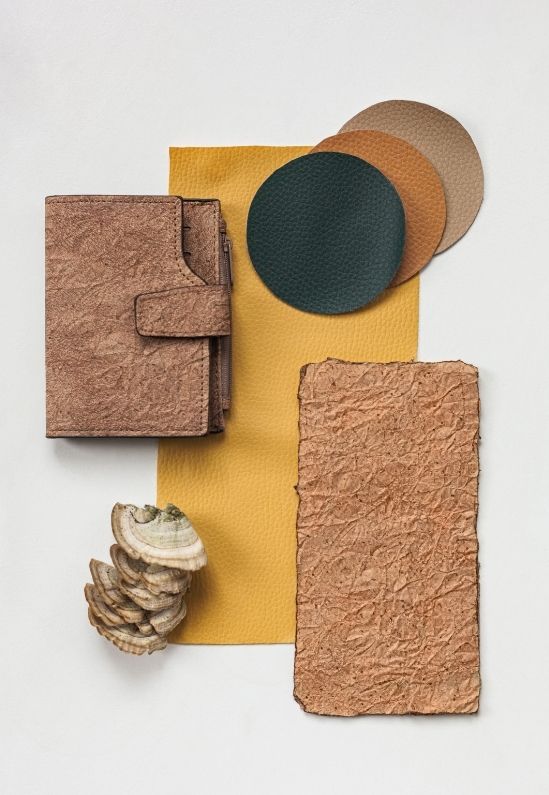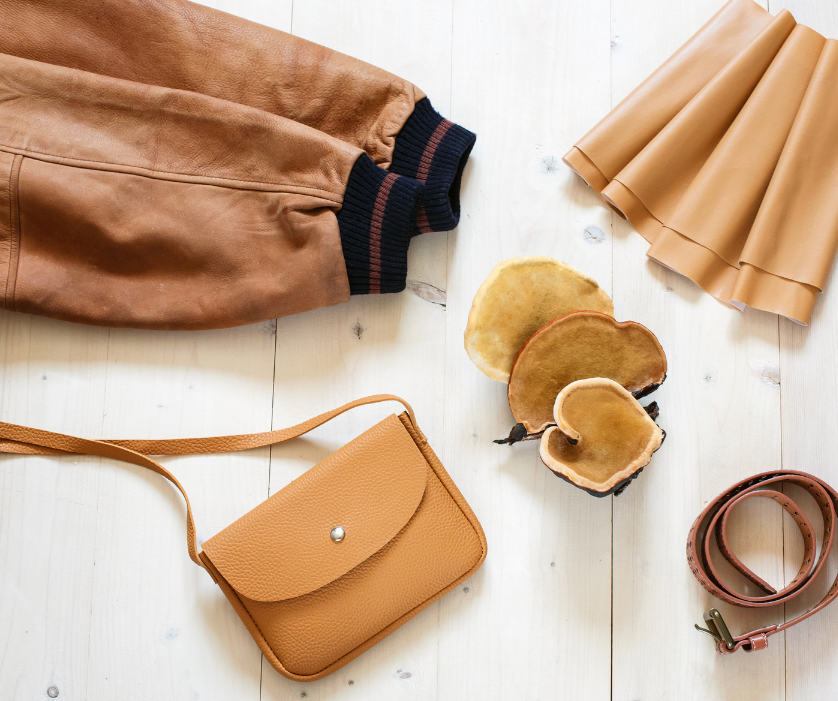Let’s take a moment to understand what ‘vegan leather’ actually means. It’s a smart marketing tool to describe a leather substitute that doesn’t use any product, which has harmed an animal.
Seems straightforward enough.
But can that substitute still cause animals harm? How do we quantify that harm and decide, ultimately, which is worse?
What Does Vegan Leather Smell Like?
Vegan/Faux leather that is made with PVC or PU often has a very strange smell from the chemicals. It’s often described as a ‘fishy’ smell and can often be very hard to get rid especially while trying not to ruin the material. PVC can also outgas dangerous toxins that give off this nasty smell.

What Does Vegan Leather Look Like?
Vegan leather comes in several different forms and qualities, so some are more ‘leather-like’ than others. Generally speaking, and focusing on good quality vegan leather, there isn’t that much difference to real leather. However, as vegan leather is synthetic, it doesn’t form a patina like real leather does when ageing and it is much less breathable as the pores that are printed onto the surface of puleather are artificial.
Thankfully, more and more people are making serious changes to their lives because of an increased awareness of animal welfare and our environmental impact – and how these two go hand in hand. The truth is that any synthetic product can be classified, and is often believed to be, a vegan-friendly product. Most vegan leather is ultimately a euphemism for, let’s say it like it is, plastic.
So, like it or not, many who are boycotting products that depend on the slaughter of animals switch to a product which can arguably accelerate just that, the slaughter of animals.
There is no doubt that the single biggest destroyer of plant and animal life on our planet is the industry that extracts and processes the crude oil needed to make plastic materials; they wipe out entire species.
Then we have the proliferation of the toxic materials needed to create and process these materials and their long-term, lethal effect on life on earth.
There is commercial gain to be had by calling something ‘vegan’. But when that label comes at such a high cost, don’t let yourself get lulled into a false sense of security.
It’s not that simple.
Nothing is.

Vegan leather might not be so vegan after all.
A synthetic sweater, full of chemical dyes, leaching micro plastics and made in a factory by unsafe, underpaid, vulnerable women can be labeled vegan.
A synthetic sweater, full of chemical dyes, leaching micro plastics and made in a factory by unsafe, underpaid, vulnerable women can be labeled vegan.
A Shetland jumper made from locally sourced, organic, small-scale farmed wool and dyed naturally by hand would not.
Which does animals more harm?
Our goal is for our products to be regenerative. To have a positive impact on the planet; and this is for both the vegan and natural materials we use. We’re not there yet, but we’re working on it.
The most commonly used materials for synthetic leathers are polyvinyl chloride (PVC) and polyurethane (PU), which are plastic based materials. Another term for fake leather is “pleather” which comes from the term plastic leather.
These two commonly used synthetic materials in particular have raised questions about the safety and dangers of vegan leather to the environment. Very few vegan leathers are made from natural materials although it is possible to find more eco friendly products made from materials like cork kelp and even pineapple leaves.
Synthetic leather is produced with different chemicals and a totally different industrial process to real leather. Bonding together a plastic coating to a fabric backing is the most common way to make faux leather; the types of plastic used in these coatings vary and this is what defines whether or not it is eco friendly

Is VeganLeather Good For The Environment?
Faux leather is known as vegan leather because the material used is never from animal skins but although this is a huge benefit for animal activists, the manufacture of synthetic leather is not beneficial to the environment or humans due to the toxins in the plastics used to make them. The manufacture and disposal of PVC-based synthetics let out hazardous dioxins, which can cause developmental and reproductive issues and even cause cancer. The synthetics used in vegan leathers also don’t fully biodegrade, although they can be broken down to a degree, they can also release toxic particles and phthalates, which can affect the health of animals and the environment.
Is VeganLeather Better Than Real Leather?
Quality and durability are also important things to consider when comparing vegan and real leather. Vegan leather is often a lot thinner than real leather and much more light weight which is great for fashion as it makes it potentially easier to work with, however it also makes it less durable than real leather. A real, good quality leather can last decades when cared for, whereas you might only get a year or so out of a pair of shoes made from good quality faux leather. This is an important factor when deciding between fake leather and real leather as the environmental impact of replacing a fake leather product multiple times is arguably more damaging than the purchase of one real leather item.
Synthetic leathers also wear out very unattractively whereas real leather ages over time and forms a patina, which is considered to add character to leather.

Faux leather, especially PVC based, isn’t breathable either where as real leather has pores through which skin is able to breathe. So for clothing items such as jackets, vegan leather can be uncomfortable when worn for long periods of time.
Faux leather, especially PVC based, isn’t breathable either where as real leather has pores through which skin is able to breathe. So for clothing items such as jackets, vegan leather can be uncomfortable when worn for long periods of time.
In addition to environmental factors, faux leather is typically a lot cheaper than real leather products. This is because it’s cheaper to produce synthetic plastic leather than it is to produce real leather. The craftsmanship of leather products is a highly skilled job and bespoke leather products such as sofas, jackets and luggage can be thousands of dollars. Manufacturers are able to command these prices because they are considered both high quality and highly durable.
Vegan leather is ultimately much less durable than real leather and tends to be thinner so it’s not uncommon for it to tear or scuff badly over time.